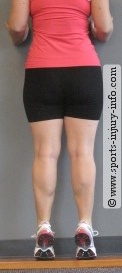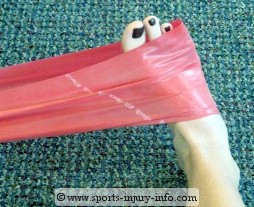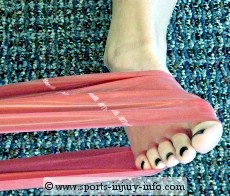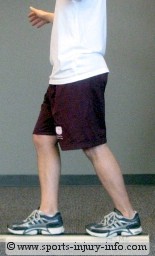OSTEOPOROSIS is a real risk for bone healing.
Two major factors that influence the risk of development of
osteoporosis are the level of bone mass achieved at skeletal
maturity (peak bone mass) and the rate at which bone loss
occurs in later years. The more bone mass available before
age-related bone loss ensues, the less likely it will decrease to
a level at which fractures occur.
Research studies point to a number of risk factors that
may have a strong influence on peak bone mass and the rate
of bone loss, and thus the development of osteoporosis
Some of these factors include: inadequate nutritional
intake, lack of physical activity, smoking, excessive alcohol
consumption, and prolonged use of corticosteroids.
In addition to diet and lifestyle factors, genetic and
ethnic factors significantly influence many aspects of
calcium and skeletal metabolism. Caucasian and Asian
women tend to have lower bone density than African and
Hispanic women and, consequently, are more likely to suffer
from osteoporotic fractures. The same holds true for thin,
smaller boned women. Evidence also suggests there may
be a link between mother and daughter; mothers with
low bone mineral content tend to have daughters with low
bone mineral content. Whether this link is a function of
heredity or the influence of the mother’s habits, or both,
remains uncertain.
HOW MUCH AND WHAT DO WE NEED FOR OUR BONES?
The Recommended Daily Allowance (RDA) for
calcium is currently set at 800 mg for individuals 1-10 years
old and 25 years and older and 1,200 mg for those 11-24
years old and for pregnant or lactating women. However,
these levels are well below the level of intake that many
experts recommend. The authors of a study of recent
intervention trials of calcium supplementation recommended that
the RDA during childhood should be 1,250 mg and 1,450 mg
during adolescence, while others have recommended a
calcium intake of up to 1,800 mg/day during adolescence.
Such an increase in calcium intake during adolescence could
play an important role in the attainment of optimal peak
bone mass.
Regarding the calcium intake for older individuals, many
experts recommend an intake of 1,500 to 2,000 mg/day to
minimize bone loss in some patients. The National
Institutes of Health (NIH) Consensus Conference on Optimal
Calcium Intake recommends calcium intakes of 1,200 to
1,500 mg for 11-24 year olds, 1,000 mg for those 25-50 years,
and 1,500 mg for those over 65.3 In addition, the NIH recommends
a calcium intake of 1,500 mg/day for women over 50
years who are not receiving hormone replacement.
While the RDA levels of calcium may be a source of
debate, the real issue is the fact that a large proportion of the
population isn’t even meeting the current RDA
levels. According to data obtained from the USDA’s
1987-88 Nationwide Food Consumption Survey, the mean
per capita daily consumption of calcium for the U.S.
population was 737 mg. The data for women as a group was
even worse: after age 11, no age group of females achieved
even 75% of the RDA for calcium. And between the ages of
12 to 29, when calcium requirements reach their peak because
of rapid skeletal growth, women consumed <60% of the RDA
for calcium. Therefore, the challenge for the health-care
professional is to educate patients on the importance of lifetime
maintenance of adequate calcium intake.
VITAMIN D
Vitamin D plays an essential role in maintaining a
healthy mineralized skeleton. The main physiologic function
of vitamin D is to maintain serum calcium and phosphorus
concentrations within the normal range to maintain essential
cellular functions and to promote mineralization of the
skeleton. Vitamin D acts primarily to increase serum
calcium by stimulating intestinal absorption of calcium.
Vitamin D insufficiency results in reduced calcium absorption,
a rise in circulating parathyroid hormone, and increased bone
resorption. The elderly often have a low level of vitamin D
deficiency owing to less efficient skin synthesis of vitamin D,
less efficient intestinal absorption, and reduced sun exposure
and vitamin D intake.
Vitamin D deficiency can result in secondary
hyperparathyroidism, a condition that accelerates bone
resorption and thus exacerbates osteoporosis. Vitamin D
deficiency is associated with increased risk of hip fracture,
and several studies have demonstrated that an increase in
calcium intake of 800-1000 mg/day with supplementation of
400-800 units of vitamin D daily will decrease the risk of
vertebral and nonvertebral fractures and increase bone
mineral density.
MAGNESIUM
Although decreased bone mass is the hallmark of
osteoporosis, qualitative changes in bone matrix are also
present, which could result in fragile or brittle bones that are
more susceptible to fracture. There is growing evidence that
magnesium may be an important factor in the qualitative
changes of the bone matrix that determine bone fragility.
Magnesium influences both matrix and mineral metabolism in
bone by a combination of effects on hormones and other
factors that regulate skeletal and mineral metabolism, and by
direct effects on bone itself. Magnesium depletion affects all
stages of skeletal metabolism adversely, causing cessation of
bone growth, decreased osteoblastic and osteoclastic activity,
osteopenia, and bone fragility.
SUPPLEMENTATIONS
Microcrystalline hydroxyapatite concentrate (MCHC) is
an excellent source of bioavailable calcium.27,53-56 MCHC is
derived from whole bone and is complete with the minerals
and organic matrix found in raw bone. In addition to calcium
and the organic components (mostly collagen protein and
mucopolysaccharides), MCHC contains phosphorus,
magnesium, fluoride, zinc, silicon, manganese, and other
trace minerals in the same physiological proportions found in
healthy bone.
Talk to your endocrinologist or primary health care provider
if you are osteoporotic and they may need to prescribe medications
as well to increase the density of your bones to prevent fractures,
improve bone healing potential, and allow for more active and
healthy lifestyles to be preserved.


















